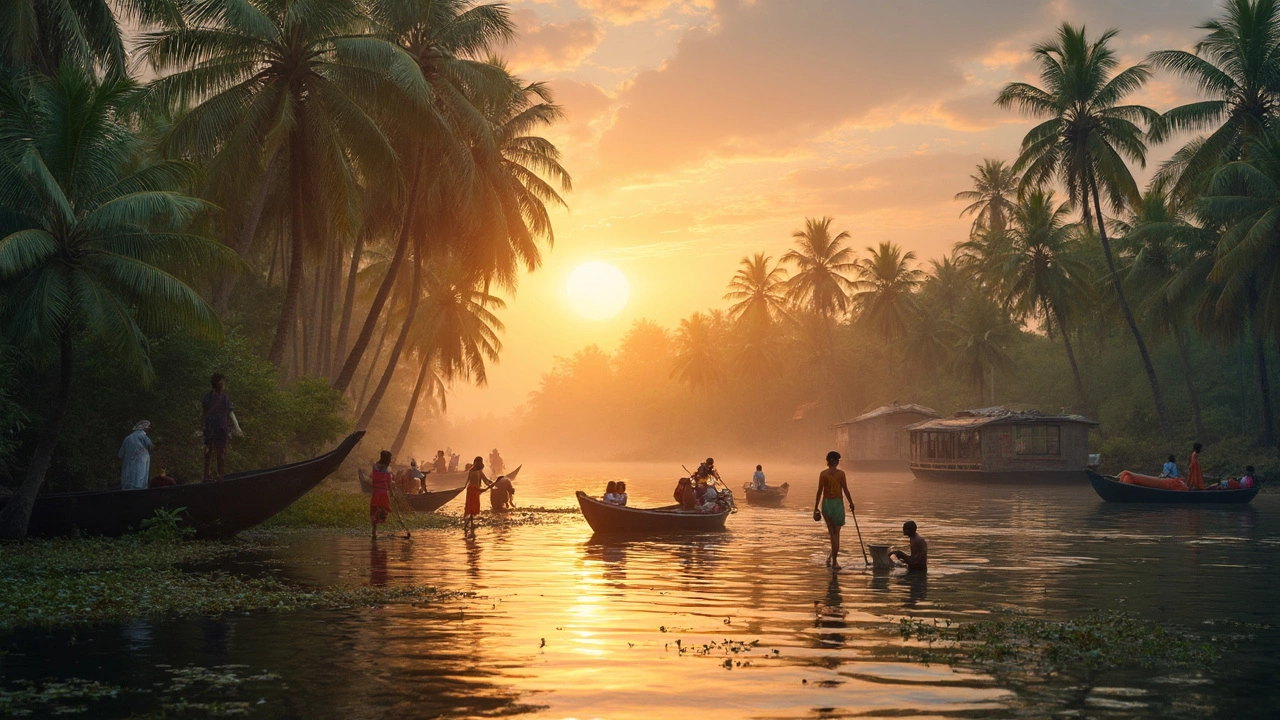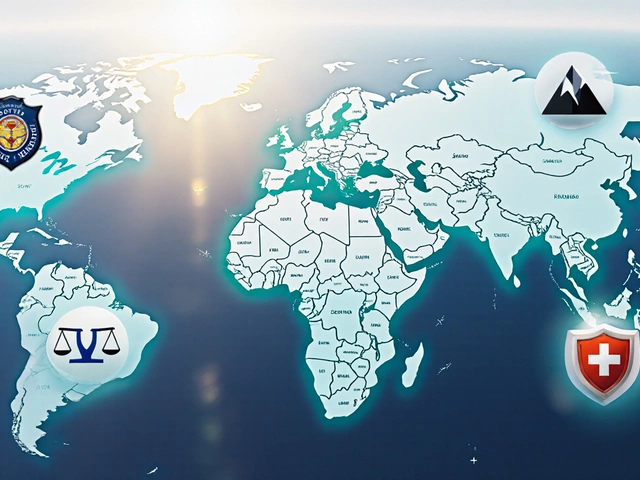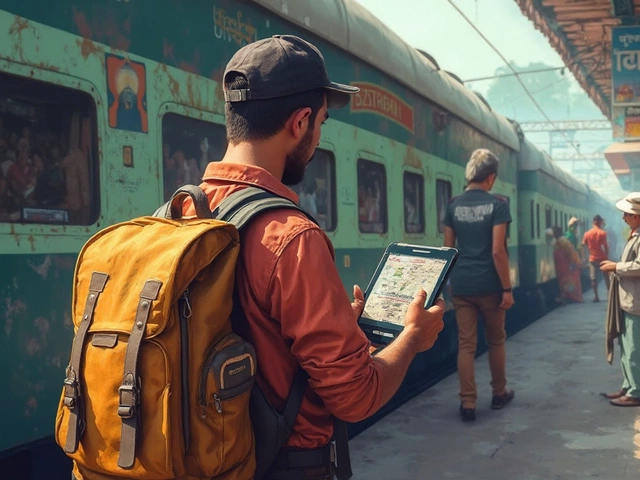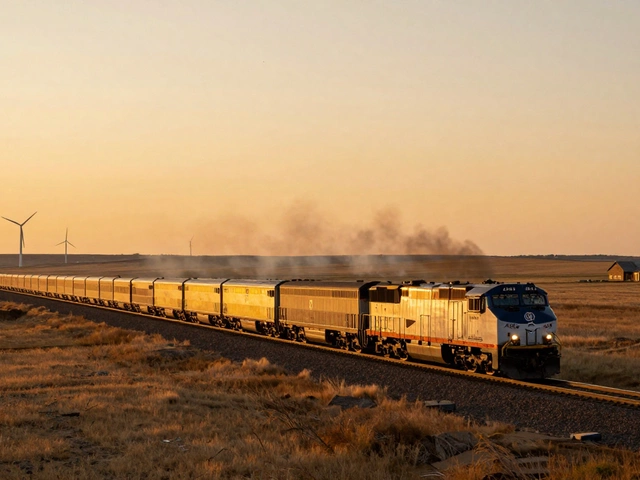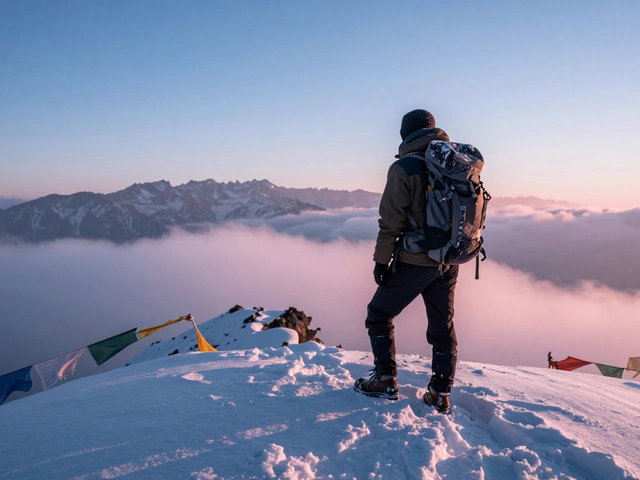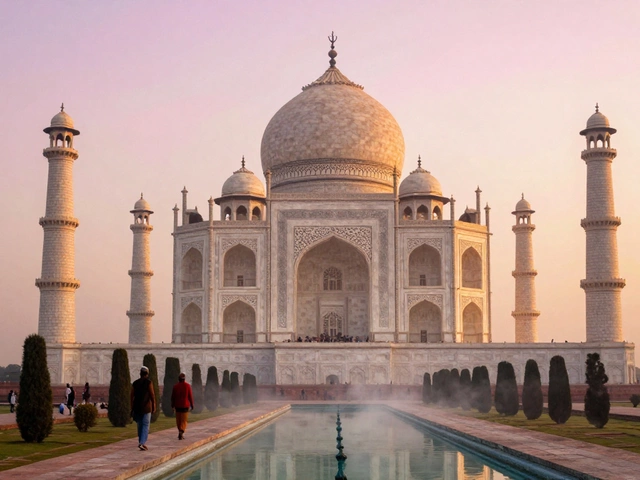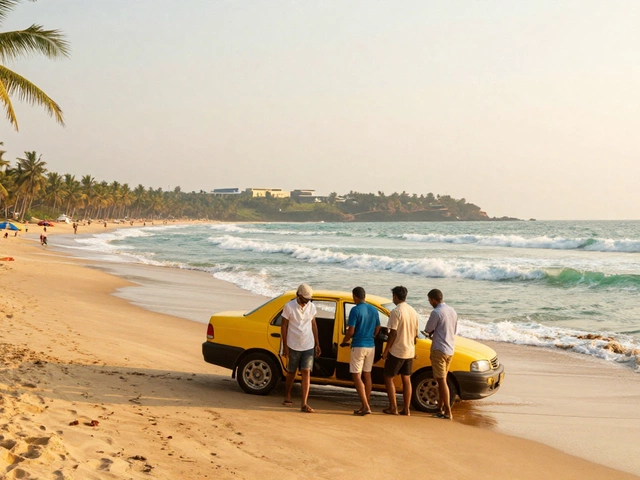Trying to figure out which part of South India is the prettiest? You’re not alone. This is a huge debate—especially among people who’ve actually taken the trains, eaten the dosas, and even turned their shoes into little boats during monsoon season.
Everyone loves to gush about Kerala, but that’s just the start. The region is so much more, whether you want to slow down on a houseboat or chase the sound of temple drums in Hampi’s stone ruins. If you’re craving beachy vibes or hill station cool, you’ll get that too. There’s no single answer here, but knowing what different spots offer can help you match your trip with what you actually want.
Here’s the truth: you can’t see it all in one go. But you can avoid rookie mistakes (like packing for winter in Kochi—trust me, you’ll regret it). If you care about nature, food, history, or Instagram-worthy views, there’s a region that tops the list just for you. Keep reading for the lowdown on what each famous corner of South India brings to the table, plus the kind of tips you’ll only get from someone who’s been stuck in Bengaluru traffic with a tired kid in the back seat.
- Why South India is a Beauty Magnet
- Kerala’s Backwaters: The Calm You Need
- Coorg and Western Ghats: Coffee, Hills, and Monsoons
- Hampi: Ruins With a Story
- Chennai to Pondicherry: Beaches and French Vibes
- Which Wins the Crown? Real Traveler Tips
Why South India is a Beauty Magnet
So, why do travelers (and even locals) get obsessed with South India? It comes down to the sheer variety packed into the region. You get beaches, hills, jungles, ancient cities, and lakes—usually all within a half-day’s drive. It’s not just about pretty views. The mix of cultures, languages, food, and traditions make every single spot feel different from the last.
Let’s look at the climate first. Unlike the north, South India doesn’t get extremes. Winters are mild, even warm. Monsoons can be heavy but turn everything so lush, locals make jokes about their houses disappearing into greenery. Western Ghats, a UNESCO World Heritage Site, run down the west, packed with rainforest, hidden waterfalls, and rare animals. Spots like Wayanad and Coorg have that fresh, post-rain smell you wish you could bottle.
If you crave beaches, South India delivers some of the best in India. Kannur, Varkala, Gokarna, Mahabalipuram, and Pondicherry have coastlines that hit different moods, from peaceful spots in Kerala to all-night parties in Karnataka. Not into sand? The Nilgiris and Kodaikanal let you cool off in the hills—tea gardens and misty views everywhere.
The region is also a goldmine for ancient architecture. Ever seen a temple with 1000+ years of history? Hampi and Madurai show a past that’s very much alive. And, unlike some tourist traps, most of these historical sites are still active spots for worship or celebration.
- Kerala’s Backwaters: Over 900 km of interconnected canals and lakes—houseboats and all.
- Western Ghats: One of the world’s 8 “hottest hotspots” for biodiversity. Think tigers, elephants, and more bird species than you can count.
- UNESCO Sites: Hampi, the Great Living Chola Temples, and the Nilgiri Mountain Railway are just a few.
- Food Scene: You’ll find more than dosa and sambar. Seafood feasts, filter coffee, coconut everything—it’s all local.
Can’t decide what month to visit? Here’s a quick FYI that helps:
| Best Months | Where to Go |
|---|---|
| October to February | Beaches and cities (Chennai, Kochi, Pondicherry) |
| March to May | Hill stations (Munnar, Ooty, Kodaikanal) |
| June to September | Monsoon magic (Kerala backwaters, Coorg) |
All in all, South India isn’t just beautiful—it’s flexible. You’ll find something new whether you’re after adventure, food, or just a break from city noise.
Kerala’s Backwaters: The Calm You Need
People don’t call Kerala "God’s Own Country" for nothing. Its backwaters are basically a maze of lakes, rivers, and lagoons, dotted with tiny villages and lots of palm trees. The most famous stretch is between Alappuzha (Alleppy) and Kumarakom, and if you’ve ever seen those dreamy photos of houseboats drifting along mirror-like water, that's the spot.
The best part? You’re not signing up for another hectic, noisy sightseeing day. Renting a houseboat—called a kettuvallam—is all about unwinding. You’ll eat Kerala-style meals on board, chat with the local crew, and see regular life roll by: school boats, fishing nets, and kids waving from the shore. Most folks book a houseboat for 1 or 2 nights, and the price usually includes food and crew.
A couple of tips for your South India trip:
- Book your houseboat directly instead of using sketchy online agents. Most hotels in Alleppey or Kumarakom can arrange it hassle-free.
- Go between November and February if you want cooler weather and less rain. Monsoon (June to September) turns everything lush, but you’ll get showers nearly every day.
- If you’re short on time, opt for a daytime cruise instead of overnight. You’ll still see a lot and it’s cheaper.
Want more details? The backwaters aren’t just water. Strong eco-tourism efforts keep these areas clean—plastic bans are actually enforced in parts of Alappuzha, and some houseboats now use solar power and treat waste properly. Around 1,000 houseboats run on these backwaters, but don’t worry, there’s enough space that you never feel boxed in.
| Average Houseboat Prices (2025) | What’s Included |
|---|---|
| Day cruise: ₹7,000-₹10,000 | Lunch, tea, crew, sightseeing |
| Overnight cruise: ₹10,000-₹18,000 | Stay, meals, crew, fishing, stops at villages |
Make sure to try the seafood—especially karimeen (pearl spot fish) if you aren’t vegetarian. And for families, kids usually love watching ducks, otters, and colorful kingfishers. Honestly, Kerala’s backwaters set the bar high for
Coorg and Western Ghats: Coffee, Hills, and Monsoons
This part of South India is what people imagine when they picture lush green hills, endless coffee estates, and cool air that smells like rain and mud. Coorg—also called Kodagu—is the superstar here. It sits right in the lap of the Western Ghats, which run parallel to India’s west coast and are actually a UNESCO World Heritage site because of their crazy biodiversity.
Let’s talk coffee. Coorg is India’s coffee country—over 35% of the country’s coffee comes from here. You can actually walk through coffee plantations, see how beans are dried, and sip fresh brews while watching the morning mist clear. Some estates offer tours and even homestays, so you’re not just snapping a quick pic; you’re getting hands-on. If you’re short on time, the Tata Coffee Museum in Pollibetta is a neat stop that breaks down the whole growing and roasting process in plain English.
The weather is a big deal. From June to September, monsoon hits hard and everything goes wild—waterfalls (like Abbey Falls) are at their best, but so are the leeches. If you want quieter trails and drier boots, October through March is peak “hills and chill” season. Don’t show up in July expecting to hike every day without getting drenched.
If you’re into trekking, the region has classic routes, like Tadiandamol (the highest peak in Coorg) or Pushpagiri. Most treks are kid-friendly, especially in post-monsoon. For families or folks who hate getting stuck in crowds, Coorg is much calmer than places like Ooty or Munnar.
Wildlife? You’ll find elephants and bison at Nagarhole National Park, one of India’s best spots for jungle safaris. Early morning is the sweet spot—animals aren’t sleepy, and tourists haven’t filled up the jeeps yet.
Need a bite? Coorg’s food is meaty, earthy, and spicy. Try pork curry (Pandi Curry) if you eat meat, or Koovaleputtu, a steamed rice treat, if you don’t. You’ll regret skipping the homemade stuff at a local homestay.
If you’re a planner, here’s a quick summary to help:
| Type of Traveller | Best Time | Must-Do |
|---|---|---|
| Nature Lovers | June - September | Waterfalls, coffee estate walks |
| Hikers | October - March | Tadiandamol trek, Pushpagiri trail |
| Families | Winter | Nagarhole safari, homestay meals |
So if you want nature, great food, some peace, and you don’t mind getting your shoes muddy, Coorg and the Western Ghats pretty much have you covered.
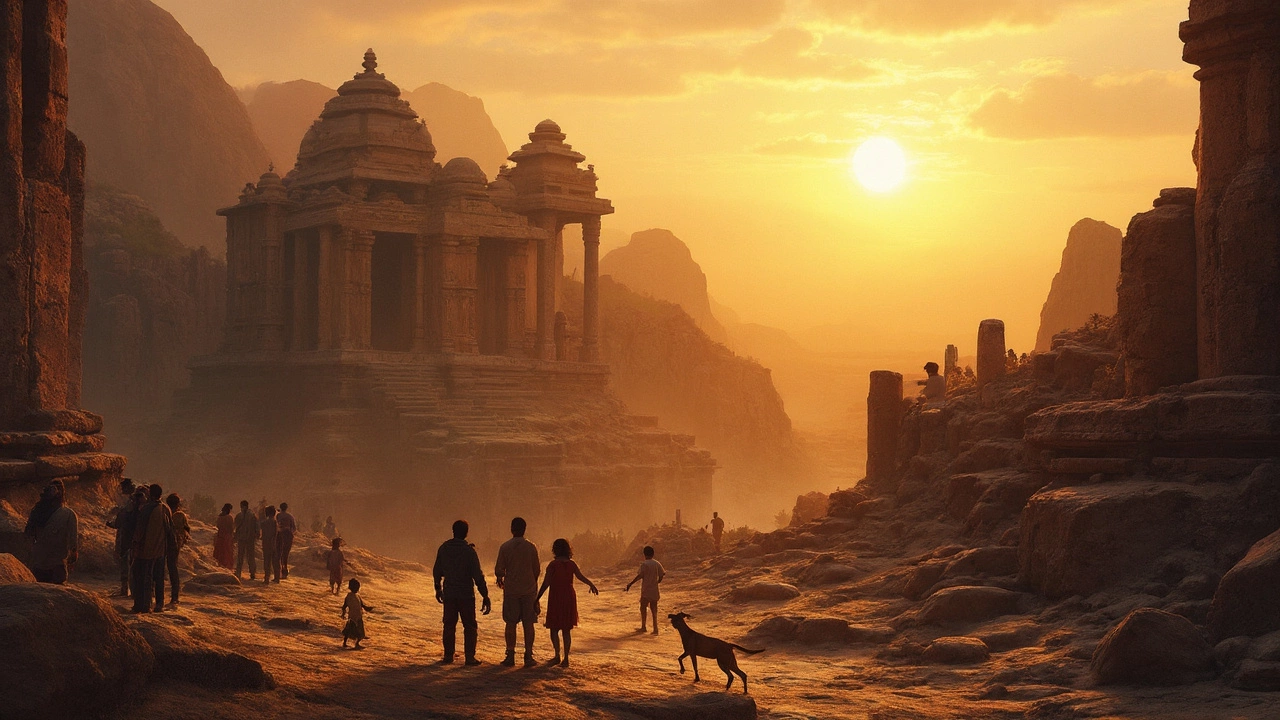
Hampi: Ruins With a Story
Hampi is one of those places you might have seen in textbooks but never realized how wild and real it feels up close. This place in Karnataka is basically an open-air museum, with boulders scattered everywhere, ancient markets, and ruins that take you back to when it was the capital of Vijayanagara—one of South India’s biggest empires. You’ve got over 1,600 remains to check out, from temples to crumbling palaces. The vibe? It’s a little Indiana Jones, a little road trip drama.
Here’s what stands out about Hampi:
- The Virupaksha Temple is still active. Locals come to pray, not just snap pics. It’s been around since the 7th century.
- Kids love the stone chariot at Vittala Temple—seriously, it looks almost like it could roll off even now.
- Massive bazaars mean you can wander for hours and picture life centuries ago, except now there’s wi-fi in some cafes (big upgrade, right?).
- Hampi is a UNESCO World Heritage Site, so the government’s pretty strict about preserving things. Don’t expect wild nightlife—Hampi closes down early and plastic bottles are getting phased out around the main sites.
If you’re curious about the past, the ruins tell the story of a city that was richer than most European cities in the 1500s. Traders from as far as Persia used to come here. On long weekends, Indian families—mine included—pack snacks and climb up Matanga Hill for sunset views.
| Quick Hampi Stats | Details |
|---|---|
| # of Major Sites | Over 1600 monuments |
| Entry Fee (Indian/Foreigner) | ₹40/₹600 for main sites |
| Best Time to Visit | October to February (cooler, less rain) |
| Famous Dishes | Bisi Bele Bath, Idli, Dosa, Filter Coffee |
It can get hot by noon, so start as early as possible—imagine exploring with the sun on turbo mode! If you want an easy loop, rent a cycle or a moped. Just keep an eye out for monkeys (hide your snacks!). Heads up: signal can be pretty patchy. Download offline maps if you’re driving in alone. Hampi isn’t just for history nerds—it’s for anyone who wants to see South India’s past, right out in the open, boulder by boulder.
Chennai to Pondicherry: Beaches and French Vibes
This stretch is perfect if you want a mix of city buzz, chill beaches, and a touch of old-school Europe. Starting from Chennai, you get city life, food stalls serving crispy dosas, and the famous Marina Beach, which is one of Asia’s longest beaches. It’s not the cleanest, but locals swear by sunrise walks and fried fish from the stalls nearby.
Drive south along the East Coast Road—locals call it ECR—and you hit the artsy suburb of Mahabalipuram in about an hour. Here’s where ancient history meets the sea. The Shore Temple is a legit UNESCO site and you’ll see stone carvings right on the beach. If you’ve got kids, they’ll like the crocodile bank a few minutes down the road.
Once you reach Pondicherry, things get French real fast. The vibe changes: pastel-colored houses, cobbled streets, coffee that’s actually good, and bakeries selling fresh croissants. Don’t miss the French Quarter. It’s super walkable, and you’ll see the difference the old French influence made here.
- The main beaches, like Promenade Beach and Paradise Beach, are well-loved for relaxing and swimming. Paradise Beach is only accessible by boat, so plan ahead and carry a towel—there’s almost nowhere to change except basic shacks.
- You’ll still hear Tamil everywhere, but bakeries selling baguettes are just normal here. If you like handicrafts or indie shopping, Pondy’s boutiques sell handmade soaps and linen clothes that make great souvenirs.
If you plan a trip here, time your visit. Summers get humid fast. October to February is breezier and better for outdoor eating or a scooter ride. Weekends get crowded, so mid-week is best if you want quieter beaches or sofa space at the best cafés.
| Spot | What Stands Out | Must-Try |
|---|---|---|
| Chennai | City energy, Marina Beach | Saravana Bhavan dosa |
| Mahabalipuram | Shore Temple, ancient carvings | Fresh grilled seafood by the shore |
| Pondicherry | French Quarter, beaches | Croissants, filter coffee, Goubert Market |
So if you want beaches and a taste of French vibes without leaving India, this route checks all the boxes. Bring sunscreen, light clothes, and cash—cards don't always work at beachside stalls. It’s a super doable piece of South India with a side of real variety you’ll love, whether you travel solo or with kids in tow.
Which Wins the Crown? Real Traveler Tips
This is where things get real. Honestly, picking the "most beautiful" part of South India depends on what you want out of your trip. Families swear by the chill vibe around Kerala’s backwaters, while solo travelers often end up chasing sunrises in Coorg’s coffee hills. Let’s break down how these places stack up, based on real feedback and a little lived experience.
- Kerala’s Backwaters: Super popular for couples and families. Floating slowly on a houseboat while eating local fish curry is one of those things you just have to try. The Alleppey-Vembanad stretch is the best known, but if you want quieter, check out Kumarakom—they aren’t as commercial.
- Coorg & The Western Ghats: Perfect for monsoon lovers and anyone who finds comfort in the smell of coffee. Between June and September, it’s fresh and everything is neon green. The local homestays aren’t just affordable—they’re also where you taste the best filter coffee and homemade pandi curry.
- Hampi: History nerds and Instagram addicts both get their fix here. The boulders, temples, and river views are totally unique, and the town is compact enough to bike around in a day or two. Best hack: Wake up early to catch the sunrise from Matanga Hill—most people miss this and it’s honestly gorgeous.
- Chennai & Pondicherry: If you want culture plus beach, this combo makes sense. Marina Beach is always buzzing, but for a quieter hangout go for Serenity Beach in Pondy. The French quarter here isn’t just for looks—it still has old bakeries and creaky colonial homes operating as cafes and guesthouses.
Here’s a quick look at what travelers care about most, based on a 2024 survey from a popular travel group:
| Region | Best For | Average Stay (days) | Repeat Visits (%) |
|---|---|---|---|
| Kerala Backwaters | Relaxation, Scenery | 3-4 | 61 |
| Coorg | Nature, Food | 2-3 | 45 |
| Hampi | History, Adventure | 1-2 | 30 |
| Pondicherry | Culture, Beaches | 2-3 | 41 |
If you want peace and those classic beautiful places shots, Kerala wins for most people. Love cooler weather and green views? Try Coorg. Into history, or traveling on a budget? Hampi’s the spot. Pondicherry is where you go for a blend of India-meets-Europe without leaving the country.
For families, pack less and plan more downtime—kids get tired with all the exploring. For solo travelers, don’t overthink it; public transport and hostels are cheap, and you’ll always meet people. If you’re short on time and want to cram the highlights, consider a loop between Kochi, Munnar, and Alleppey; it gives you a taste of hills, tea plantations, and backwaters in a single go.
The most beautiful part of South India? It’s the one that feels right for you. Pick by what you want to wake up to—coast, coffee trees, temple stones, or French bakeries. Trust your gut and go for it.
